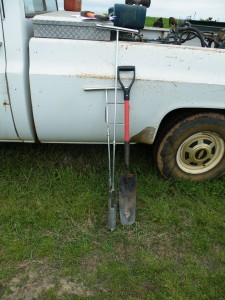Fertilizer is and has always been a significant production expense whether you are growing corn, cotton, or pasture forage. Fertilizer costs have increased tremendously over the last few decades. Commercial fertilizers are the most costly input in warm season grass forage production. Below are some important issues relative to fertilizer efficiency as well as alternatives for reducing fertilizer use and reducing production costs for forage production.
- Soil Test: Adequate soil fertility is one key to successful forage and livestock production in Texas. Soil testing is still the best management tool to monitor soil fertility levels. Routine soil tests can help identify nutrient deficiencies and inadequate soil pH. Applying fertilizer without having taken a soil test amounts to guessing how much fertilizer is needed. Applying too much fertilizer is a waste of money; applying too little will result in less-than-optimum forage production. Based on soil test results, cost-effective fertilization programs can be developed to meet forage nutrient requirements and minimize production costs. (https://soiltesting.tamu.edu)
- Choosing the most adequate fertilizer source: Several fertilizer sources are commercially available to supply N, P, K, and micronutrients to forage crops. Ammonium nitrate, ammonium sulfate and urea are the major N sources used on pastures in Texas. Organic sources such as biosolids and animal manure also represent important sources of N that can be used in pastures. When choosing the right fertilizer source, it is important to consider important factors, such as price, fertilizer effectiveness, method and rate of application.
- Timing and Rate of Fertilizer Application: Fertilizer should be applied when the forage is actively growing. For most warm-season grasses commonly used in Texas, growing season does not start until night temperatures reach 60F. For establishment of new plantings, fertilizer should not be applied until plants have emerged. Nitrogen and K should be split-applied into multiple applications; after emergence and 30 to 50 days later. For hayfields, N and K should be applied after each cutting.
- Utilization of Forage Legumes: In association with Rhizobium bacteria, clovers and other legumes obtain N from the atmosphere. Specific strains of this type of bacteria live on the roots of particular legumes. The bacteria obtain N from air in the soil and “fix” it in a form usable by plants. Bacteria accumulate in small nodules on the legume roots but most of the N is in the form of protein in the leaves. The primary driving force in calculation of N fixation is legume yield. High yielding legumes fix more nitrogen. Cool season annual clovers can contribute with about 75-100 lbs N/acre for the subsequent grass crop. The majority of the legume-N is transferred to the soil by unused plant material and/or animal excreta. Grazing animals can return more than 80% of the consumed nutrients to the soil through the feces and urine. If the legume crop is harvested and removed from the pasture as hay or haylage, the contribution of legume-N to the subsequent crop is reduced. Cool-Season Forage Legume Management Guide
- Use Biosolids or Animal Manures: One important aspect to consider when using organic amendments is the N present in these sources is not readily available to plants and total N is often a poor indicator of N availability. When poultry litter is surface applied to pastures, an estimated 30% of the N is lost through volatilization, 60% is available to the plant the first year, and 10% is not available until after the first year. About 70 to 80% of the K and P in poultry litter is available to plants. As the organic compounds mineralize, N and other essential nutrients become available to the plants. Factors such as source, time and rate of application and environmental conditions can impact the effectiveness of organic materials in providing N to pastures. Because improper application of organic amendments may lead to excessive soil P concentrations, it is important to monitor soil fertility after manure and/or biosolids application.
Vanessa Corriher-Olson
Forage Extension Specialist
Soil & Crop Sciences
Overton, TX
Texas A&M AgriLife Extension Service
Texas A&M University System


